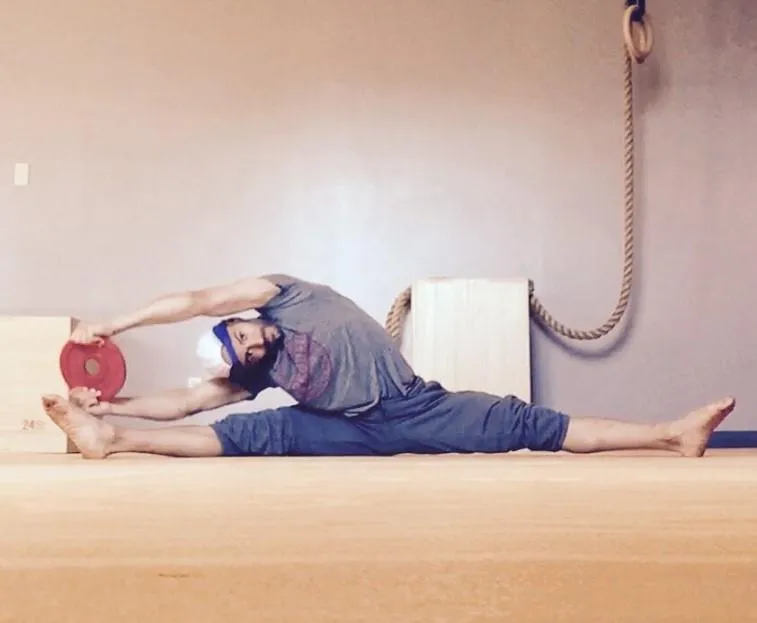
5 Mobility Positions Every Athlete Should Master In 2025
Overview
For your New Year resolution, make your top priority to commit to things that support high performance. Maybe this is your physical training schedule, your routine, and basically every single decision you make every day of 2025.
Start with this list below.
Do not confuse these with mobility exercises or flexibility drills. These are positions - meaning they are a posture that everyone should have the ability to shape themselves into with complete ease (e.g. without any effort).
Unbeknownst to many athletic training professionals, these 5 mobility positions are necessary for baseline human movement, as well as essential in the pursuit of maximizing one’s athletic potential. Why? Because the ranges of motion you will have if you can comfortably achieve these 5 positions will open up enormous opportunity in any realm of elite sport or physical activity.
When we use the word “position”, it is simply just that. A pose, or position, that your body should be able to make. An easy example is standing. Standing is a baselines or fundamental position for humans. Barring any disabilities, you should be able to stand.
Which Mobility Positions Made The List?
The reason we chose the following 5 positions is simple. If you can achieve each of these positions and maintain a state of ease, then your training and performance will accelerate beyond most of your peers.
Most people have lost the ability to perform these positions. No matter how much accessory mobility programming, strength training, and mobility training you do, nothing is a replacement for having a body that has the mobility, structural balance, and flexibility to achieve these positions with ease.
Equipment You Need
The beauty of this list is for 4 out of the 5 positions, you need zero equipment.
Another bonus is that while a guided approach might get you to the end result faster and more effectively, you really can achieve these positions just by doing them as best as you can.
With relentless effort and focussed attention, your body will slowly regain its natural mobility, flexibility, and range of motion in each of these positions.
If you’re looking for recommendations on a guided approach, consult the list where we link to options that are available to speed up the process.
Here we go with the list. Don’t look at these as stretches, or feats of extreme flexibility. Even though some might categorize these as accessory work or flexibility drills for athletes, remember: they really are just positions that every human being with a normal level of capability can perform.
And if you can’t do them, lack of these specific ranges are an indication of existing or future pain and injury.
5 Must-Have Ranges Of Motion For Athletes
The Natural Resting Squat
Position overview: Feet flat on the ground, with the ability to lift the toes off of the ground with ease. The legs should be fully compressed with the hamstrings covering the calves. The thighs should be touching and covering the thorax.
In any mobility and flexibility programming, reviving the natural resting squat position should be the primary goal for the mobility aspect of any athletic training program. The ability to achieve this position means fully-functioning joints, a decompressed lower back, and so much more.
A 5-Minute Kneeling Sit
Position overview: Kneeling on the ground with a hand-width distance between the knees. Ankles roll outward and toes turn inward. The body is sitting in between the folded legs, with the glutes touching/sitting on the surface of the inward-facing feet.
Another example of complete compression of the lower body, the kneeling sit demonstrates healthy knee, ankle, and hip mobility.
If you find this position impossible, you can start with aiming for the first progression, which is sitting flat on the heels/Achilles’ tendons. You can use a pillow or rolled-up towel placed in the fold of the legs to ease into it if needed. Only when sitting on the Achilles’ is easy, then begin to roll the ankles outward, toes inward, and aim towards sitting on the feet, in between the legs.
A 2-Minute Passive Hang
Position overview: Using a pronated grip (palms facing away from you, thumbs wrapped around a bar), passively hang without feet in contact with a surface. Elbows should be straight (not locked) with the ears sinking into the shoulders. It should feel like a dead-weight hang.
Work on this using a straight bar, like a door-way pull-up bar, or even a safe ledge in the home. Anyone with shoulder pain, elbow pain, wrist pain, back pain, or hip pain should make a daily practice out of the passive hang.
Start with aiming for a 30-second hold. Once you can pass 30-seconds, gradually increase the time until you reach 2 minutes. Exercise extra caution if you are prone to shoulder dislocations.
The Standing Pike
Position overview: With straight legs, heels touching, bend over to rest palms flat on the floor with the heat touching the lower leg.
This position is also known as a standing bend. You can watch a video overview of the standing pike here.
The Bridge
Position overview: Starting lying on the back, with weight distributed evenly across both hands and feet, press hips and shoulders upward. Head should be off of the ground. Heels should be flat on the ground.
No need to get into a bridge with fully straightened arms. For practical thoracic and hip ranges of motion, all you need to be able to do is exceed a 90-degree angle of the knee.
Why These Positions Are Not-So-Commonplace
These fundamental positions are almost always lost in anyone over the age of 12 who has grown up in North America. This unfortunate loss underscores the epidemic of sports injuries that has swept Westernized societies.
The reason for the mobility disappearing is complex, and outside the scope of this article. However, an easy cause to note is the modern lifestyle. Too much sitting, too little movement; not enough use of the body at the ground level; too much overspecialization, too little general movement development.
Conclusion
The goal of any flexibility program for athletes should be to first achieve these 5 basic positions. Full range of motion in squat, pike, bridge, hang, and kneeling sit is by far the most practical flexibility needed to meet demands of any sport.
Athletic trainers and physical therapists regularly prescribe and recommend mobility exercises and mobility routines that have little practical carry-over to sport performance.
As an athlete, just master these 5 positions. You might have your work cut out for you, but we can assure you - it is definitely worth pursuing. Many athletes cannot perform any of these positions. And usually, when we start to work with an athlete with goals of peak sport performance, it can be frustrating using up so much time to achieve these positions before being able to work on more complex skills and drills.
Can you get into these positions? Any questions on them? Leave a comment. They will be answered by either Darren or myself.



Copyright © 2019-2025 Athletic Engineering Canada. All rights reserved.
